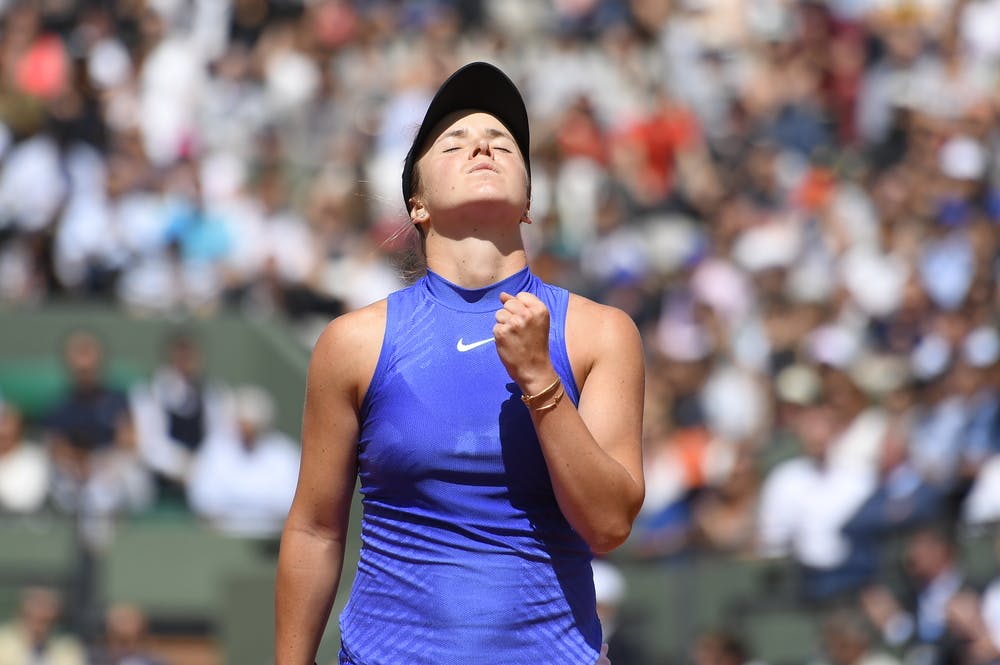“Definitely, on a Grand Slam, it's pressure from everywhere. And you probably also have expectations from yourself,” she admitted in Rome after thumping Halep 6-0 6-4 in a 67-minute decider.
“So you have to be mentally ready, physically ready. Probably extra more than the normal tournament. But I try to approach a Grand Slam same as any other tournament, that's why. But still, you have in the back of your mind that it is a Grand Slam. There is something different about it.”
In recent times, Svitolina has discovered in the most painful of ways just how different the pressure is that accompanies a Grand Slam campaign.
After beating Halep in Rome last year, the Ukrainian was dominating their re-match in the 2017 Roland-Garros quarter-finals, building a 6-3 5-1 lead before crashing to a 3-6 7-6(6) 6-0 defeat. A few months later at the US Open, she led Madison Keys 4-2 in the final set of their fourth-round encounter before the American reeled her in. At Melbourne Park this year, the draw had opened up beautifully for her, yet she came out flat against unseeded Elise Mertens and fell to a 6-4 6-0 quarter-final defeat.
As is becoming typical, Svitolina bounced back to win prestigious events in Dubai and then in Rome – she also won the Brisbane International in the run-up to Melbourne – and has again generated discussions surrounding her title favouritism on Parisian clay.
Yet she insists that in 2018, it’s not a case of déjà vu on the eve of Roland-Garros.
This time, she says, she’s prepared.
“It's gonna be different, definitely, from the last year,” she said. “Last year was almost first time for me going into the Grand Slam as a favourite. This year, it's different. I also was hoping I was one of the favourites.
“There was couple of Grand Slams that I was close. But still it's gonna be different. I'm going to take it as a challenge first. And for me, very important to take one match at a time and just go out there and enjoy playing on the big courts, (the) atmosphere.
“Roland Garros, that's what we are training for. And I'm gonna give it the best shot.”
 ROLAND-GARROS
18 May - 7 June 2026
ROLAND-GARROS
18 May - 7 June 2026


